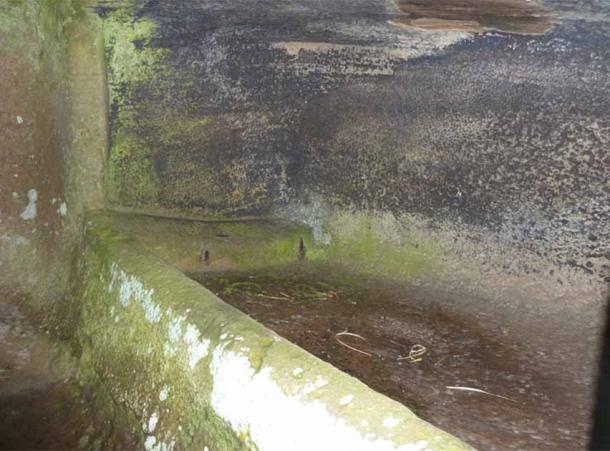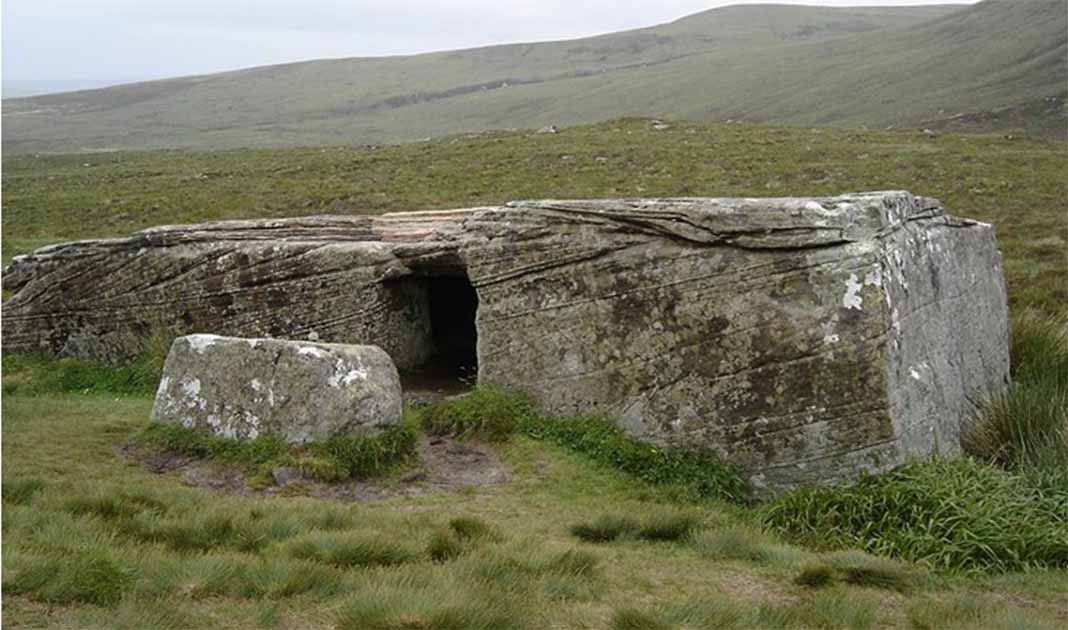The Enigma of the Dwarfie Stane, Ancient Tomb of Orkney
There is something about Orkney that inspires great mystery in any visitor. It is an ancient place - situated just a “stone’s throw” north of Scotland - and it boasts a rich history that reaches far back in time. One of its ancient relics is the Dwarfie Stane, a rather enigmatic prehistoric tomb that sits in the solitude of Hoy Island. Who carved it, and whose remains rested within it, we do not know. But that enigma just opens a whole world of possibilities, and quickly stirs the imaginative mind.
The Dwarfie Stane is one of Orkney’s Most Valuable Ancient Relics
If you happen to wander in the desolate landscapes of Hoy Island, Orkney’s second largest, you might stumble across a wide glaciated valley, roughly in its middle. Sitting between the small settlements of Rackwick and Quoys, it is a green and barren place, with steep sides and barely clinging mist that drifts across the landscape. This valley is a truly solitary place - it is not much more than desolate peatland, but it is captivating, nonetheless. And right in its center lies the dormant Dwarfie Stane, its sleep undisturbed for thousands of years.
- The Scottish Stonehenge Architect and His Aberdeenshire Stone Circles
- Rare Pictish Stone Uncovered in Scotland’s Birthplace
The stone is in fact a rather large and almost naturally rectangular piece of Devonian Old Red Sandstone, placed there by the creative hand of mother nature, millions of years ago. And some of Hoy’s ancient inhabitants saw it as an ideal place for a tomb. The stone is a glacial erratic - i.e., a stone that is glacially deposited and differs from the rock’s native to the area. That’s exactly why it appears to “stick out” from the landscape. It measures 8.6 meters (28 ft) in length, and 4 meters (13 ft) in width. Slightly slanted, it is around 2.5 meters high (8.2 ft) at its highest end.

Dwarfie Stane, Hoy, Orkney, Scotland. Southern cell. (Otter/CC BY-SA 3.0)
Seeing it, one could easily overlook the fact that it is a chambered tomb. On one of its wider sides there is a small hand-carved entrance - a 1 meter (3.3 ft) square, that opens into a very small tomb space. From the entrance is a small passage, 2.2 meters (7.2 ft) long, with two cells at the sides. The cells measure roughly 1.7 meters by 1 meter (5.6 ft by 3.3 ft). The height of the ceiling is just 1 meter (3.3 ft), meaning that anyone entering would have to either be on their knees or really bent over.
The Final Resting Place of an Unknown Prehistoric Person
To this day, it is not known who might have eternally rested in this unique tomb. The tomb space has been carved with a lot of patience and precision - its sides are perfectly smooth, with small ridges and grooves in the space where the deceased would be laid down. The right cell even has a “pillow” - a small piece of uncut rock at its inner end. Either way, it is certain that the tomb builders paid a lot of care and attention when carving the tomb. But it must have been a tedious and grueling job, since the Old Red Sandstone has been described as “extremely compact” and hard. And the only tools available then were made of stone and deer antler. This fact makes the creation of Dwarfie Stane a feat of awe-inspiring proportions!
- 600 Rock Carvings Found by Clever Inquiry and Torchlight
- 12 Hauntingly Beautiful Headstones of Staglieno Cemetery
The Dwarfie Stane has many legends connected to it. Just as the name suggests, a local legend states that a Dwarf by the name Trollid lived within it, while another - in a rather comical contrast - states that the tomb was built by giants. Of course, it was the work of neither dwarves nor giants, but of Orkney’s Neolithic inhabitants.
The age of the tomb has been estimated at 3,000 years old or more. Who was it for is not known, perhaps an ancient chieftain of Hoy - or a Bronze Age leader of the local tribes. Once the deceased was placed inside, the tomb was sealed with a great square slab, which now lies at the front of the rock.
Alas, sometime in the passing centuries the tomb became the target of grave robbers. Instead of pushing the great slab aside, they carved a hole in the tomb ceiling, plundering whatever lay inside. This hole has been repaired in modern times.
So Simple - Yet So Unique
The simplicity of Dwarfie Stane hides its true uniqueness. One curious aspect is its similarity to tombs in Southern Europe, in the Mediterranean. Many scholars proposed that it is the attempt “at imitation” of Mediterranean tombs, but this theory has been dismissed. It is agreed that the tomb is of local inspiration, and no proof exists that it has any direct links to Mediterranean-type tombs. Still, the Dwarfie Stane is considered the only example of a Neolithic rock-cut tomb in the whole of Britain. This fact alone makes it very unique. Still, despite this uniqueness, the Dwarfie Stane is still consistent with the Orkney-Cromarty type of chambered tombs that are found on Orkney. But all the other tombs are made of many stones stacked, rather than carved out from a single stone slab as here.
The Dwarfie Stane was always a popular attraction in the region. Over the centuries many visitors carved crude graffiti, few of which can still be read today. A notable visitor was Captain William Mounsey, who visited in 1850 and left an inscription in Persian:
“I have sat two nights and so learnt patience".

This is an inscription in Persian was left by captain William Henry Mounsey of Castletown and Rockcliffe, who camped here in 1850, and reads: "I have sat two nights and so learnt patience". Above the Persian is his name written backwards in Latin. The complete text is "YESNVOM SVMLEILVC". Visible here is "ELMVS MOVNSEY"; in mirror writing: "YESNVOM SVMLE". (Bruce McAdam/CC BY-SA 2.0)
And even though it is somewhat simple at first glance, the Dwarfie Stane is nevertheless an incredibly important piece of Orkney’s distant history, and a captivating relic of the Stone Age people who lived there.
Top image: 'Dwarfie Stane' (Dwarf's Stone) on the Island of Hoy, Orkney Islands, Scotland Source: Grovel at English Wikipedia/CC BY 3.0
References
Castleden, R. 1987. The Stonehenge People: An Exploration of Life in Neolithic Britain, 4700-2000 B.C. London: Routledge & Kegan Paul Ltd.
Sutherland, A. 2023. Dwarfie Stane: Mysterious 5,000-Year-Old Rock-Cut Tomb On Dark Enchanted Island Of Hoy, Scotland. Available at:
https://www.ancientpages.com/2023/02/21/dwarfie-stane-mysterious-5000-year-old-rock-cut-tomb/
Towrie, S. 2023. The Dwarfie Stane, Hoy. Available at:
http://www.orkneyjar.com/history/tombs/dwarfiestane/



















